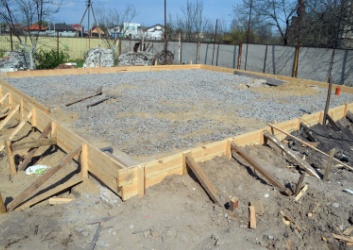
Critical Scaffold Safety Tips to Avoid Disaster
As a construction professional, your responsibilities involve managing complex projects,

Want to make Scaffolds lasts as long as possible? With some basic maintenance and care, you can extend scaffolding life and save money in the long run. Here are five pro tips to keep your scaffolding in tip-top shape for years to come.
If you want your scaffolding to last as long as possible, invest in high-quality, durable materials right from the start. Cheaper alternatives may seem appealing, but they won’t stand the test of time and weather.
Proper handling and storage of your scaffolding material is key to maximizing its lifespan.
First, be extremely careful when erecting and dismantling the scaffolding. Dropping components from heights can damage them beyond repair. When not in use, dismantle the scaffolding and store components individually. Don’t just leave the structure standing idle for extended periods. The elements will take their toll, causing rust, dents, and other damage.
Keep all parts in a dry, covered area. Exposure to excess moisture causes metal parts to corrode and rust, wood to warp, and general deterioration. A simple tarp, shed, or garage can go a long way.
Avoid stacking heavy items on top of each other. Parts should be stored horizontally and not piled up in a disorganized fashion. This prevents scratches, dents, and makes it easier to find what you need.
Inspect all parts regularly for any signs of damage or wear and tear. Look for rust, dents, splinters, or other issues and repair or replace as needed before next use. It’s unsafe to use damaged components, and they won’t last as long.
Regular inspections and maintenance are key to keeping your scaffolding in good working order and extending its usable lifetime. As a scaffolding owner, it’s up to you to perform routine checkups and care for your equipment.
To prolong the lifespan of your scaffolding equipment, using protectors and pads can help shield it from environmental damage and general wear and tear.
Protect your scaffolding tubes and frames from scratches, dents, and rust by covering them with protective padding or shields. Wrap vulnerable areas like corners, edges, and joints with protective padding, bumpers, or corner protectors. Secure them in place with ties, straps, or brackets.
Protect your scaffolding platforms and walk boards by covering them with non-slip matting, decking, or grip tape. This provides traction for workers and protects the surface from damage. For scaffolding that will be left up long-term or during winter, consider using weather-resistant and waterproof materials.
Shield your scaffolding from the elements by using mesh netting, tarpaulins, windbreaks, or weatherproof covers. Netting or mesh will protect from birds, debris, and pests while still allowing some airflow. Tarps and covers offer more comprehensive protection from rain, snow, and sun damage. Secure any protective shielding firmly so it does not flap or come loose in windy or stormy weather.
In coastal areas or places exposed to sea spray, it is especially important to protect metal scaffolding parts from corrosion. Use rust-preventing sprays, greases, or paints, particularly on joints, bolts, and poles. For long-term protection, consider galvanized or stainless steel scaffolding parts which are more rust-resistant.
Keeping your scaffolding in good working order requires properly training under OSHA standards anyone who will be using the equipment. Here are some tips to ensure your team understands how to care for scaffolding to maximize its lifespan:
So there you have it five easy pro tips to make your scaffolding last longer and save you money. By following these best practices for care and maintenance, you’ll get more mileage out of your investment and avoid costly replacements or repairs down the road. Remember, your scaffolding is a key part of your work setup, so show it some love. Keep it clean, lubricated, and protected from the elements. Do regular inspections to catch any issues early. Always follow the manufacturer’s recommendations for assembly, disassembly, and storage. If you take the time to implement these tips, your scaffolding can serve you well for years to come. The extra effort will be well worth it for the savings and safety benefits. Your wallet and your crews will thank you.

As a construction professional, your responsibilities involve managing complex projects,

As a construction professional, you are always looking for innovative

After spending many years helping people in all areas of

DSS (Direct Scaffold Supply) has launched a new website designed